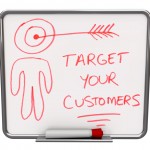 In FMCG there is plenty of data but paradoxically a lack of meaningful insight. This is because Analysts are caught up in a cycle of data wrangling. Communicating analytical findings should be your priority however you probably find yourself wasting too much time cleansing data, trouble shooting excel calculations, mashing up spreadsheets or manually re-sizing charts. Automating processes or acquiring new tools can make a big difference. Take a step back and look at how you are working with data. According to Tableau Software ‘organisations are losing patience with multiple logins and clunky processes to move and manage data. Rapid integration leveraging simple interfaces is going to become the standard’.
In FMCG there is plenty of data but paradoxically a lack of meaningful insight. This is because Analysts are caught up in a cycle of data wrangling. Communicating analytical findings should be your priority however you probably find yourself wasting too much time cleansing data, trouble shooting excel calculations, mashing up spreadsheets or manually re-sizing charts. Automating processes or acquiring new tools can make a big difference. Take a step back and look at how you are working with data. According to Tableau Software ‘organisations are losing patience with multiple logins and clunky processes to move and manage data. Rapid integration leveraging simple interfaces is going to become the standard’.
When software becomes part of the problem
5 ways you can work better with data
 It is impossible to keep up with the speed at which data grows in your organisation, however you can continuously improve how you work with data. Here are 5 of the key ways:
It is impossible to keep up with the speed at which data grows in your organisation, however you can continuously improve how you work with data. Here are 5 of the key ways:
- Transfer the heavy lifting of data processing to scalable technologies – this frees you up to focus on what the data is telling you
- Work more visually with data – it is more efficient and helps you tell your story better
- Bring as much of your data into a standardised format as you can – accessing multiple sources through different software/portals creates barriers
- Give your colleagues direct access to some of the key numbers – it will reduce demands on your time
- Collaborate – more Analysts will lead to better debate and develop a richer story more quickly
Having the confidence to make data driven decisions
 Not everyone speaks data and that’s OK. If data skills are not your strength make sure you have some good Analysts on your team to help you see and understand data quicker. However avoid the trap of asking for more and more detail and delaying making a decision. Data can only take you so far and some of them have an expiry date. If you are tasked with developing a data driven culture in your organisation, surround yourself with good Analysts. Have the confidence to go where the data takes you. Otherwise why would you review data in the first place?
Not everyone speaks data and that’s OK. If data skills are not your strength make sure you have some good Analysts on your team to help you see and understand data quicker. However avoid the trap of asking for more and more detail and delaying making a decision. Data can only take you so far and some of them have an expiry date. If you are tasked with developing a data driven culture in your organisation, surround yourself with good Analysts. Have the confidence to go where the data takes you. Otherwise why would you review data in the first place?
Fluid data conversations replace static dashboards
 In their 2015 Business Intelligence trends Tableau Software reported that ‘we are starting to see an age when data is interactive enough that it can become the backbone of a conversation’. At Delphi Analytics we had noticed this dynamic as organisations are beginning to tire of big presentations and reject them in favour of ‘live interactive analytics’ sessions. As analytical tools have become faster and more flexible it is possible to have a dynamic conversation about business issues with the data in the room. Charts become the beginning rather than the end of the conversation.
In their 2015 Business Intelligence trends Tableau Software reported that ‘we are starting to see an age when data is interactive enough that it can become the backbone of a conversation’. At Delphi Analytics we had noticed this dynamic as organisations are beginning to tire of big presentations and reject them in favour of ‘live interactive analytics’ sessions. As analytical tools have become faster and more flexible it is possible to have a dynamic conversation about business issues with the data in the room. Charts become the beginning rather than the end of the conversation.
Field Data to Field Intelligence
 The need to sell as much as possible has always been the single most important worry keeping Sales Leaders awake at night. However their concerns do not end there. There is a rising demand for increased management visibility of salesforce and channel performance. Companies know that if front line sales people hit targets more consistently, this offers the best opportunity to grow revenue and market share. Sales Managers must capitalise on every available competitive edge, and deliver increased visibility on their progress to management teams.
The need to sell as much as possible has always been the single most important worry keeping Sales Leaders awake at night. However their concerns do not end there. There is a rising demand for increased management visibility of salesforce and channel performance. Companies know that if front line sales people hit targets more consistently, this offers the best opportunity to grow revenue and market share. Sales Managers must capitalise on every available competitive edge, and deliver increased visibility on their progress to management teams.
How does Field Data become intelligence?
There is a rich abundance of Field Data available, to help you performance manage your people and measure your Company’s progress. The data comes from two sources;
- Sales Data – sales volumes, call coverage, call frequency, distribution
- Audit Data – availability, NPD compliance, selling space, promotion execution
Whether you have your own salesforce or are using a third party, you should have full visibility of your Field performance and this must happen in a timely fashion. Otherwise you are not getting the best return on your investment. This is your data and you should have access to it in any format you need – to pivot, trend, visualise and report as you like. You should be able to view it by region, channel, customer or sales rep, and at the most granular product level. And finally your data should be available to you at the push of a button.
Your Field Data is your raw material for insight, and insight is what will help you do the job better. Sales Managers that demand full & flexible access to their data will set themselves apart, helping their companies emerge from the economic downturn faster than the competition.
If you would like any help optimising your Field Sales Data, please contact Delphi Analytics.
5 things you should know about data
 It is easy to get caught up in the current wave of excitement about data and to believe that a fact-driven model of the world is the only destination on the analytics journey. While data can be a powerful asset if used in the right way, we should keep our expectations in proportion to the opportunity it represents. After all there are many things that data is not.
It is easy to get caught up in the current wave of excitement about data and to believe that a fact-driven model of the world is the only destination on the analytics journey. While data can be a powerful asset if used in the right way, we should keep our expectations in proportion to the opportunity it represents. After all there are many things that data is not.
Data is not a force unto itself. Data does not change the world by itself. Databases do not knock on doors, make phone calls, develop new products or implement organisational change. The value that data can potentially deliver is realised by human beings who use data to do useful things.
Data is not a perfect reflection of the world. Datasets are representations of the world gathered, generated, selected, corrected, collated and filtered for particular and diverse purposes. They are often incomplete, imperfect, inaccurate and sometimes out of date. Rather than be taken at face value, datasets often serve as a starting point for understanding a subject.
Data does not speak for itself. Data often requires further research and analysis in order to make sense of it. Datasets need to be interpreted critically and the implications of different figures understood. We should not imagine that anyone can easily understand any dataset or that they will easily reveal their secrets.
Data is not power. While data will tell us that something is wrong or that there is a better way of doing things, this is not the same as being in a position to fix things or to affect change. The findings of analysis must be shared with decision makers to achieve the end result.
Interpreting data is not easy. There is a tendency to think that the widespread availability of data and data tools represent a democratisation of the analysis and interpretation of data. While technology has made it easier than ever before to do things with data (gather it, manage it, visualise it, publish it), this does not mean that it is easier to know what a given dataset means. Interpreting data effectively is the remit of a good analyst.
Summary of an article by Jonathan Gray from the Open Knowledge Foundation.
Which data ‘description’ fits you best?
 In our experience businesses tend to identify with one of the following six ‘data’ descriptions. Which one they relate to depends on where they are in their work with data. It also decides what sort of help they might need to move them forward. The following is a brief summary of the descriptions and the sorts of progress solutions that are relevant to each.
In our experience businesses tend to identify with one of the following six ‘data’ descriptions. Which one they relate to depends on where they are in their work with data. It also decides what sort of help they might need to move them forward. The following is a brief summary of the descriptions and the sorts of progress solutions that are relevant to each.
OUT OF THE BLOCKS – Businesses here realise the value of working well with data but are at an early stage in their journey. They are typically focussed on internal data, using it for performance reporting, budgeting and forecasting. Progress can be hampered by data quality issues and lack of expertise with basic tools.
SLICE & DICE – Data is well organised in spreadsheets or databases and pivoting numbers is ‘par for the course’. While data is more structured, businesses at this level may lose a lot of time on repetitive tasks and may be concerned with the lack of robustness of the many spreadsheets/many users model. Some automation, tools development or process improvement can help them be more effective and efficient with data.
MEASURE UP – These businesses have good data sources and tools to access them, but are not sure what they are looking for. There is an emphasis on return on investment both in relation to the data itself and the marketing activities it reports on. Social media measurement may be adding another level of complexity. Clarity on goals and the precise way progress will be measured is key.
BIG DATA, LITTLE INSIGHT! – For businesses that fall under this description, the sheer volume of data is a problem. Often interpreted as data overload, it is rather an issue of filter failure. Good analysts act as filters for their organisation. When there is a deluge of data, analysts are not succeeding. The issue may be lack of analytical talent in the business or over reliance on a single ‘keeper’ of insights. Solutions range from extending access to data to outsourcing some or all of the analysis workload.
WHAT’S THE STORY? – This description applies to businesses in which there may be plenty of good analysis work taking place, but the conclusions are not being shared with the wider business. It is not unusual for decision makers to be a lacking a summary right when it is needed. The value of the analysis is lost because of a lack of collaboration. Solutions typically involve bringing the story together eg blending data from multiple sources, sharing the output in a custom dashboard.
FINDING THE EDGE – These businesses have a depth of analytical talent that supports decision making with insight generation. Robust tools and processes are in place that ensure accuracy and efficiency. They seek competitive advantage through their ability to work with data, and continuously evolve how they do this. They tend to be pioneers in the adoption of new technology and ways of working.
If you would like any help in progressing your work with data, please contact Delphi Analytics.
Confusion in the Age of Data
Knowledge gives start-ups the real edge

Simos Mavranezoulis and Clodagh Ashe, co-founders, Delphi Analytics: ‘We are not advocates of big systems.’
by Gareth Naughton
(published in the Sunday Business Post, 29 April 2012)
Start-ups and SMEs have a wealth of proprietary information that, if properly harnessed, can give them a serious advantage over their competitors, according to Clodagh Ashe, co-founder of Delphi Analytics.
“Your information is proprietary to you, and nobody else has it. If you can make something of it or take an insight from it that will help you make better decisions in your business, it is an advantage that you have that your competitor doesn’t have,” said Ashe.
“It doesn’t take a big investment to get value from your data. You have a lot of the clues in the business already that will help you get there. It is about harvesting it.” Ashe and her business partner, Simos Mavranezoulis, set up Delphi Analytics in October 2010, having first hit upon the idea of outsourcing data analysis while working for the Glanbia Consumer Foods in data-intensive roles. They realised that there was a market in data analytics for companies that didn’t have the funds to hire a full-time senior analyst or only really needed their services on a on-off or occasional basis.
“We don’t create new data for them. By virtue of being in business, you are generating data – and that data is raw material for insight,” said Ashe. “It can be their internal transaction data; information coming from the activities of a field salesforce or a market research data set that they have bought – either a syndicated report or something that they have had customised. We take it and make sense of it for them or we tell them the story that is in the data – or we help them work better with the data themselves. So we would either automate something for them or design a new process to manage the data,” she said.
Delphi uses everyday programmes familiar to most businesses, like Excel and Access, and break down the process so it is easy to understand. “We are not advocates of big systems. They often create a barrier for SMEs because they think that data analytics is only for larger businesses, but you can get a lot of value out of your data using spreadsheets and databases,” she said.
The business has gained a foothold in the FMCG sector – where Ashe and Mavranezoulis have extensive experience – and has recently begun branching out into other sectors. “The type of work that we do is of interest to industries across a number of sectors. What we are doing is helping them know their business, their customers or their marketplace better, and you cannot say that is not relevant to anybody who is out there trading,” said Ashe.
Ashe’s advice to the entrepreneurs behind new start-ups is to set up in an industry where you have an established professional reputation – “otherwise, it is too difficult”.
“It is much easier to build a base of business with people who both know you and are happy to recommend you to other people,” she said. Then you can use that as a platform to get into other industries and cold call people who don’t know you. If you are starting where you are not known and you have no proven expertise, it is a very big mountain to climb.”
If you are going into a partnership, it is important to balance the skills and temperament needed to work so closely with someone else, according to Ashe. “Setting up a business on your own takes a huge amount of energy, and working with a business partner makes a lot of sense if you can divide the load, but it has to be somebody whose skillset complements yours,” she said.
“There is no point in having two people in a business that are both brilliant at the same things. You have to complement each other’s skills, and have a huge level of trust.”
To visualise or not, that is the question
 Is 2012 the year that interactive data visualisation becomes a requirement? Tableau software thinks so. “Graphically interesting data visualised on websites and in blogs will make business users expect that capability inside their organisations. And with the trend of bigger data, interactive data visualisation will become a critical tool in sifting through all that data. Reports filled with endless rows and columns of numbers or static, boring charts that take hours to sift through and weeks to change won’t cut it anymore.”
Is 2012 the year that interactive data visualisation becomes a requirement? Tableau software thinks so. “Graphically interesting data visualised on websites and in blogs will make business users expect that capability inside their organisations. And with the trend of bigger data, interactive data visualisation will become a critical tool in sifting through all that data. Reports filled with endless rows and columns of numbers or static, boring charts that take hours to sift through and weeks to change won’t cut it anymore.”
Using pictures is almost always the end destination of analytical work. You turn it into a picture so you can understand it better. However using visuals throughout the process (visual analytics) allows for an interactive conversation with the data, lifting the veil on insight. We get a better and faster understanding of what the data can tell us. Visual analytics capitalises on the brain’s ability to read a picture much faster than a table of numbers.
Contact Delphi Analytics to understand how data visualisation can be applied to your business.
